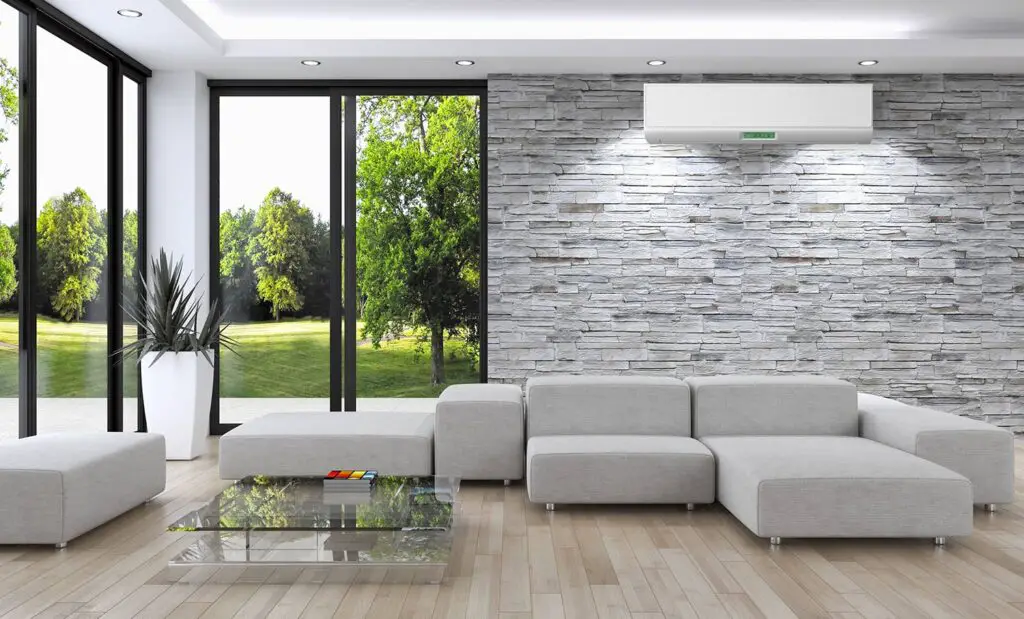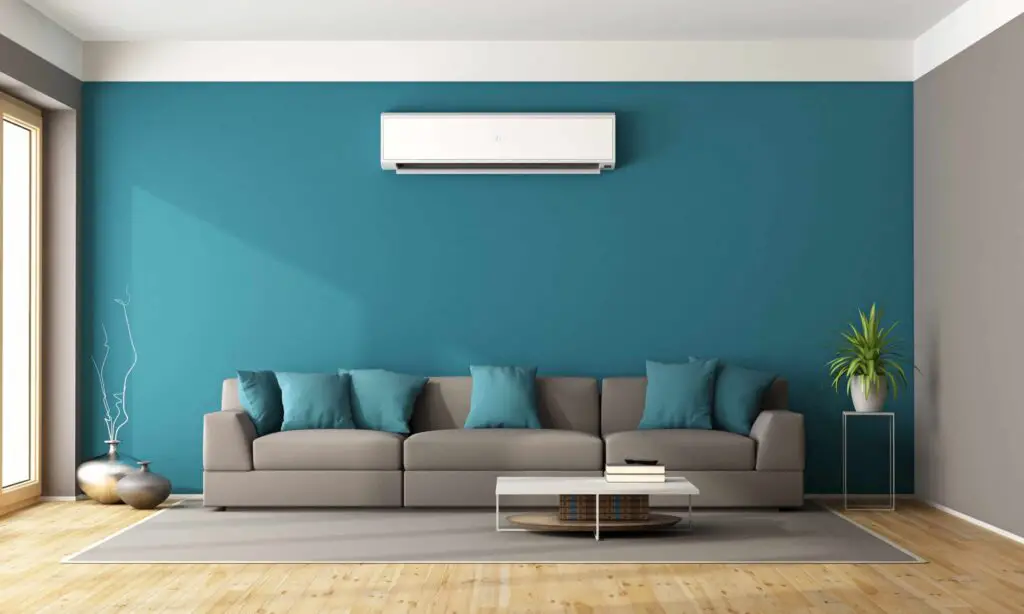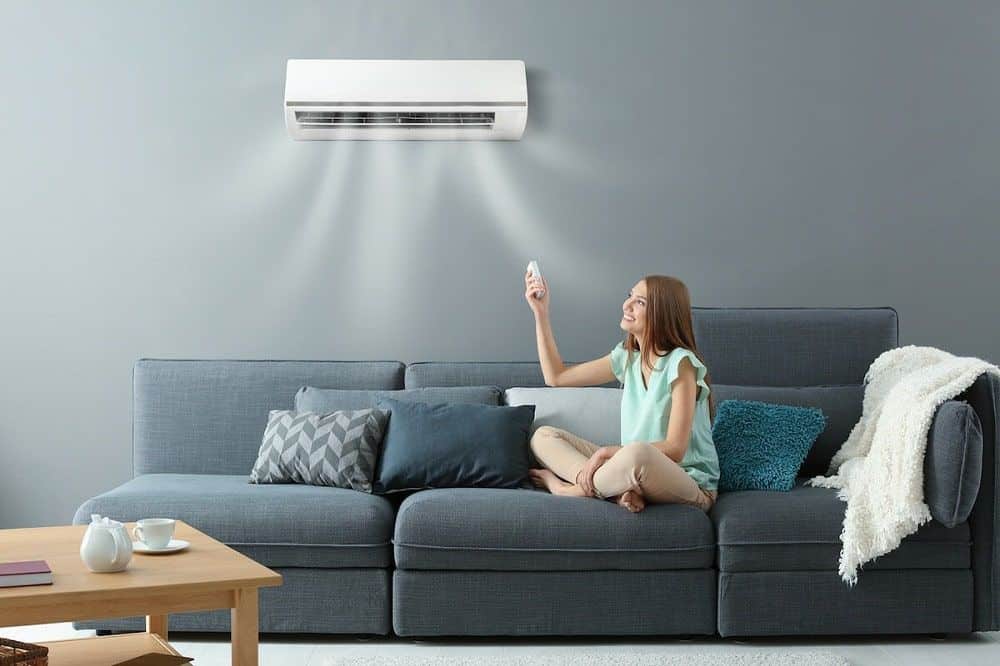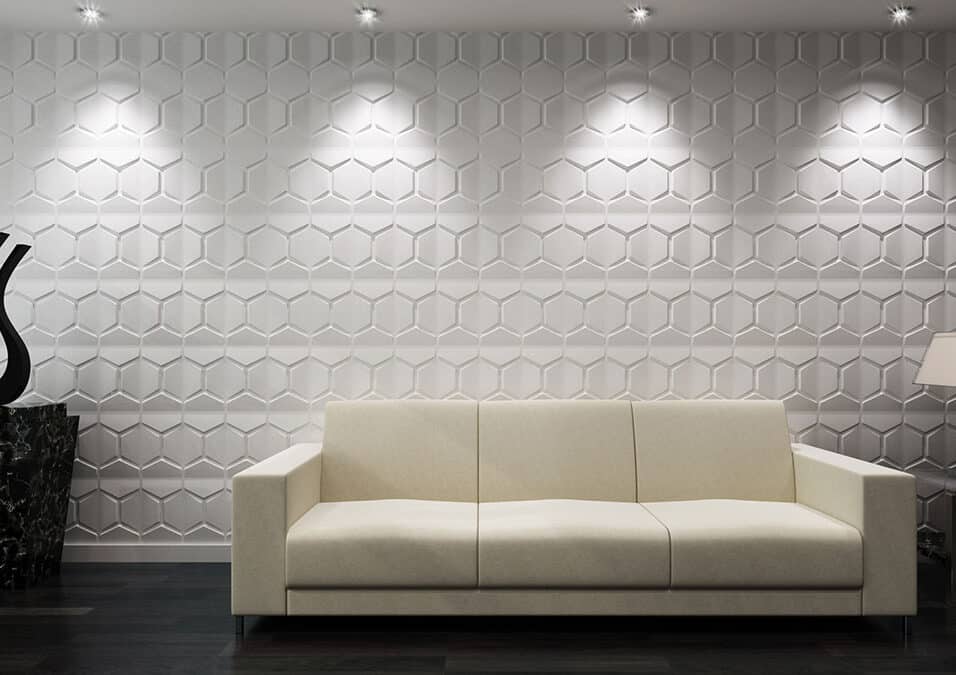How To Drain A Mini Split On An Interior Wall
Introduction
How To Drain A Mini Split On An Interior Wall: Mini splits are a popular choice for heating and cooling homes, especially in areas where traditional HVAC systems may not be feasible. One important aspect of maintaining a mini split is draining the condensate that accumulates during operation.
Draining a mini split on an interior wall can be a bit more challenging compared to units installed on exterior walls. This is because there is no natural slope for the condensate to flow out of the unit. However, with the right techniques and tools, it is possible to effectively drain the condensate and prevent any potential damage to your mini split or the surrounding area.One method to drain a mini split on an interior wall is by using a condensate pump.
Another option is to use a gravity drain system. This involves installing a split drain line that runs from the mini split to a suitable drainage location. The drain line should be sloped downward to allow the condensate to flow out of the unit. It is important to ensure that the drain line is properly insulated to prevent any condensation or leakage.

Can you put a mini-split on a inside wall?
Yes, the indoor units in a mini-split system can be mounted on an interior wall of the house. However, a mini-split system on an interior wall is more involved and more difficult than mounting it on the exterior wall of your house. Yes, it is possible to install a mini-split on an inside wall.
When it comes to installing a mini-split on an inside wall, there are a few factors to consider. First, you’ll need to determine if the wall is structurally sound enough to support the weight of the indoor unit. Mini-splits are relatively lightweight, but it’s still important to ensure that the wall can handle the load.
Additionally, you’ll need to consider the location of the indoor unit in relation to the outdoor unit. If the inside wall is too far away from the outdoor unit, you may need to explore other installation options.
It’s also worth noting that installing a mini-split on an inside wall may require some modifications to the wall itself. This could include cutting a hole for the unit, running electrical wiring, and installing a mounting bracket. While it is possible to install a mini-split on an inside wall, there are several factors to consider.
How do you drain water from a mini-split?
As warm, humid air flows across the mini split’s cooling coil, it condenses to form water droplets. In some cases when gravity is not on your side, you may need to install a condensate removal pump. Draining water from a mini-split is an essential maintenance task that ensures the proper functioning of the system. Mini-split air conditioners, also known as ductless air conditioners, are popular for their energy efficiency and flexibility in cooling individual rooms or zones.
One common method to drain water from a mini-split is through gravity drainage. This method is simple and effective, requiring minimal maintenance.
Another method to drain water from a mini-split is through a condensate pump. This method allows for more flexibility in the installation of mini-splits and ensures efficient drainage even in challenging situations.
It is important to regularly check and clean the drain line to prevent clogs and ensure proper drainage. A clogged drain line can lead to water leakage, which can cause damage to the unit and surrounding areas. Cleaning the drain line involves removing any debris or buildup that may be obstructing the flow of water. Regular maintenance, such as cleaning the drain line, is crucial to prevent clogs and ensure efficient drainage. By properly draining water from a mini-split, you can prolong the lifespan of the unit and maintain its optimal performance.
Does a mini-split need a drain line?
One of the requirements of owning a mini split is a way to drain condensate. As warm, humid air flows across the mini split’s cooling coil, it condenses to form water droplets. This water needs to be drained. Typically, this is done by installing a mini split drain line. Yes, a mini-split does need a drain line. Without a drain line, the condensate would accumulate and eventually overflow, leading to water damage and potential mold growth.
In addition to the drain line, mini-split systems may also include a condensate pump. This pump is used when the indoor unit is located below the level of the drainage point, such as in a basement installation. The pump helps to lift the condensate and push it towards the drain line, ensuring proper drainage. A mini-split system does require a drain line to properly manage the condensate produced during operation.
Where do you run the drain line on a mini-split?
It drains water just like any other mini split. Typically you will have an air handler on the wall and there will be a condensate hose in the air handler. You have to drill a hole in the wall and you put that condensate drain out through that hose. You run it down through the house and it drains out.
When installing a mini-split air conditioning system, one important consideration is where to run the drain line. The drain line is responsible for removing condensation that accumulates on the indoor unit. If not properly installed, the drain line can cause water damage and other issues. Therefore, it is crucial to know the best location for running the drain line. The most common and recommended location for running the drain line on a mini-split is through an exterior wall.
Another option for running the drain line is through a nearby drainpipe or plumbing system. This can be a convenient solution if there is an existing drainpipe in close proximity to the indoor unit. By connecting the drain line to the drainpipe, the condensation can be effectively drained away without the need for additional modifications or drilling.
It is important to note that the drain line should always have a downward slope to ensure proper drainage. This prevents any water from accumulating and causing blockages or leaks. Additionally, it is recommended to install a trap in the drain line to prevent any odors or pests from entering the system.
In summary, the drain line on a mini-split air conditioning system is typically run through an exterior wall or connected to a nearby drainpipe. It is crucial to ensure proper drainage by maintaining a downward slope and installing a trap.
What is the slope for a mini-split drain?
Condensate Drain Pipe Sizing
Slope to be at least 1/8” per foot or 1 percent, that is for every 12” horizontally there must be at least an 1/8” drop vertically.
The slope for a mini-split drain refers to the angle at which the drain pipe is installed to ensure proper drainage of condensate water. Mini-split systems are a type of air conditioning system that consists of an indoor unit and an outdoor unit connected by refrigerant lines. These systems are commonly used in residential and commercial buildings to provide cooling and heating.
The ideal slope for a mini-split drain is typically between 1/8 inch to 1/4 inch per foot. This means that for every foot of horizontal distance, the drain pipe should have a downward slope of 1/8 inch to 1/4 inch. This slope allows the condensate water to flow freely and prevents any stagnant water from accumulating in the drain pipe.
It is important to note that the slope of the drain pipe may vary depending on the specific installation requirements and the manufacturer’s recommendations. Some mini-split systems may require a steeper slope, while others may allow for a more gradual slope. It is always best to consult the installation manual or seek professional advice to determine the appropriate slope for a specific mini-split system.
In addition to the slope, it is also important to ensure that the drain pipe is properly insulated to prevent any condensation or heat loss. Insulating the drain pipe helps maintain the temperature of the condensate water and prevents any potential damage to the surrounding area. Proper insulation can also help improve the overall efficiency of the mini-split system.
To drain a mini split located on an interior wall, follow these steps:
First, locate the drain line on the unit. If it is, use a small brush or pipe cleaner to remove any debris or buildup that may be blocking the flow of water. It’s important to do this regularly to prevent water from overflowing and causing damage to your walls or floors.
Once the drain line is clear, find a suitable location to drain the water. This can be a nearby sink, a floor drain, or a dedicated drain line.
Finally, test the drainage system by running the mini split and observing if water is flowing freely through the drain line. If there are any issues, repeat the steps above to ensure proper drainage.
In summary, the steps to drain a mini split located on an interior wall involve locating the drain line, clearing any clogs, choosing a suitable drainage point, and testing the system for proper water flow. Regular maintenance and cleaning of the drain line are essential to prevent any potential issues.” “
Can you provide guidance on draining a mini split that is installed on an interior wall?
Draining a mini split that is installed on an interior wall requires a few simple steps to ensure proper functionality and prevent any potential water damage. Here is a step-by-step guide to help you with the process:
1. Locate the drain line: The first step is to locate the drain line of your mini split unit. This is usually a small PVC pipe that is connected to the indoor unit. It is important to find this drain line before proceeding with the draining process.
2. Prepare a drainage system: To prevent any water damage, it is essential to have a proper drainage system in place. You can use a bucket or a drain pan to collect the water that will be drained from the mini split unit. Make sure the drainage system is positioned securely and can handle the amount of water that will be discharged.
3. Clean the drain line: Over time, the drain line of your mini split unit can become clogged with dirt, debris, or algae. It is important to clean the drain line regularly to ensure proper drainage. You can use a mixture of water and vinegar to flush out any blockages. Simply pour the mixture into the drain line and let it sit for a few minutes before flushing it out with clean water.
What is the process for draining a mini split unit that is mounted on an interior wall?
Draining a mini split unit that is mounted on an interior wall requires a few simple steps to ensure proper functionality and prevent any potential water damage. Here is a step-by-step guide to help you with the process:
1. Locate the drain line: The first step is to locate the drain line of your mini split unit.
2. Clear any blockages: Once you have located the drain line, check for any blockages or obstructions. Over time, dirt, dust, or debris can accumulate in the drain line, causing it to clog. Use a small brush or pipe cleaner to clear any blockages and ensure that the water can flow freely.
3. Clean the drain pan: The drain pan is located beneath the indoor unit and collects the condensate water. It is important to regularly clean the drain pan to prevent any buildup of dirt or mold. Use a mild detergent and warm water to clean the drain pan, and make sure to dry it thoroughly before reassembling.
Could you explain how to properly drain a mini split that is situated on an interior wall?
Draining a mini split that is located on an interior wall requires a few simple steps to ensure proper functionality and prevent any potential water damage. Here is a step-by-step guide to help you with the process:
Step 1: Locate the drain pipe – The drain pipe is usually located at the back of the indoor unit.
Step 2: If you notice any obstructions, use a small brush or pipe cleaner to remove them. This will ensure a smooth flow of water.
Step 3: Connect a drain hose – Attach a drain hose to the drain pipe.
Step 4: If you notice any leaks or water accumulation, double-check the connections and clear any blockages.
If you are unsure about any of the steps or encounter persistent problems, it is always best to consult a professional HVAC technician for assistance.
Do you have any tips or instructions for draining a mini split that is located on an interior wall?
When it comes to draining a mini split that is located on an interior wall, there are a few important steps to follow. First, it’s crucial to locate the condensate drain line, which is typically located at the bottom of the indoor unit. This drain line is responsible for removing the excess moisture that is produced during the cooling process. Once you have located the drain line, you can begin the draining process. One tip is to regularly check and clean the condensate drain line to prevent any clogs or blockages.

Conclusion
One important consideration when draining a mini split on an interior wall is the location of the drain line. It is essential to position the drain line in a way that allows for easy access and maintenance. Additionally, ensuring that the drain line is properly insulated can help prevent any condensation or freezing issues. Regularly cleaning and clearing the drain line of any debris or blockages is also crucial to maintain proper drainage.
Another important aspect to consider when draining a mini split on an interior wall is the use of a condensate pump. This device can be a convenient solution for situations where gravity drainage is not possible or practical. A condensate pump works by pumping the condensate water to a higher elevation or across longer distances, allowing for more flexibility in the placement of the split drain line. However, it is important to regularly check and maintain the condensate pump to ensure its proper functioning.
Draining a mini split on an interior wall requires careful consideration and proper maintenance. By understanding the importance of proper drainage, choosing the right drainage method, and regularly checking and maintaining the drainage system, you can ensure that your mini split operates efficiently and effectively. Whether you choose to use a gravity drain or a condensate pump, it is crucial to position the drain line correctly and regularly clean and clear any blockages. By following these steps, you can enjoy the benefits of a well-functioning mini split system for years to come.








